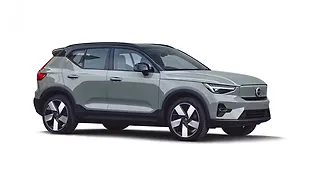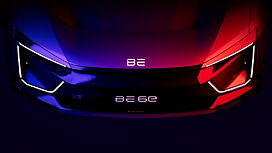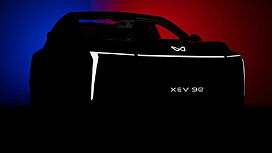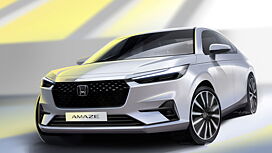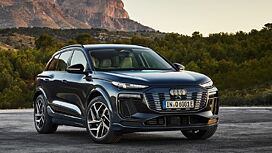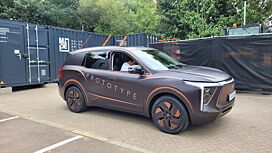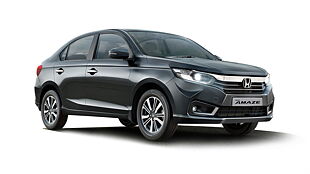Overview

These are family sedans that place the driver fi rst, courtesy their engine performances. But, which is more enjoyable? And, is being enjoyable enough to win the family sedan crown?
We love the way the Linea looks, both inside and out. And, that’s reason enough to put down the money for many. However, there’s no running away from the average performance its 1.4-litre petrol engine delivers. And worse still, it’s not greatly fuel efficient either.
On the other end, there’s the Honda City. It’s a fine looking car as well, but unlike the Fiat, which is more like a blonde dressed in an evening gown, the City is your gorgeous woman serving up an ace in tennis apparel; it looks more sporty than elegant. But, what works in the Honda’s case, and works very well indeed, is its engine. It’s not just fuel efficient; it packs in great performance as well.
Now though, the Italian prom queen has got a new, horsepower packed heart, complete with forced induction.
Exterior & Interior

Quality of interiors has improved on the T-Jet

Lightly tap the brakes, throw it hard into the bend and see the Linea grip no end. Body roll is well controlled too and we like the alacrity of the steering as well
But, how do these get along around corners? Well, the Linea has always been terrifi cally capable around bends. And with its new found enthusiasm, it only feels better. Of course, it has had help – it now runs fatter rubber and has disc brakes all round to reign in the performance.
Drive the City and you’d appreciate its turn-in and balance around bends. Yes, it has body roll, but it never getsthe car to break into dramatics one can’t control. It’s also pretty tidy on the brakes and one can carry a bit of it into corners for a shaper entry. It’s also forgiving. So, even if you overcook it, you can still control it. What really lets the car down in this aspect are its skinny tyres.These give up before the chassis and the various underpinnings even begin complaining.

Interiors are better put together on the City and the visibility is better too

City can go around corners well, but its skinny tyres let it down. These lose grip sooner than the car itself would prefer. The car does roll more than the Linea however
Jump into the Linea thereafter and it’s a totally different world. The Linea feels a lot tauter and willing to be driven hard. It can be chucked into corners with greater confi dence. Its mid corner behavior can be controlled withmore precision and the grip from those 205-section tyres (new for the T-Jet) is so much more than the Honda. Drive the cars back to back around the same bend, and at the exact same speed where the City would turn frantic andbe all over the place, the Fiat just goes around as if it were toying with the bend. It’s simply incrediblefor a sub-10 lakh rupee family sedan. But more importantly, it’s a more fun-to-drive car.
The Linea’s steering has a signifi cant role to play here as well. It’s quick and precise and there’s hardly any dead spot anywhere; it’s like one linear movement from centre to lock. The City’s steering is quick too, but it lacks the same feel and involvement you get in the Linea.
Engine & Gearbox

Fiat Linea
Let’s then first divulge deeper into the hearts of the two ladies. The Italian lass’ heart is still a 1.4-litre engine, but thanks to turbocharging, it now develops 114bhp compared to 90bhp on the regular car. The torque figures have climbed as well. And one can feel the difference instantly. There’s some lag below 2000rpm, typical of a turbocharged car, but it isn’t as pronounced as on some of the diesels we know. Hit the 2000 mark and you can feel the engine come alive. But, the real joy comes in closer to 2500rpm. The Linea then on shoots ahead with some vigour; it’s just one linear, powerful and excitable tug that never fails to paste a smile on the face.
Now, the engine does rev just short of 6500rpm, but, the performance begins tapering off past 5500rpm and it hits a plateau of sorts at 6000rpm. There’s obviously no point revving the engine thereafter. In fact, we’d suggest keeping the engine in the 2500-5500rpm range.

Honda City
The good bit is one doesn’t need to struggle to keep the car in this range. Thanks to the gearing, it comes naturally. Around twisties too, it’s difficult not to fall for the engine. There’s always so much go out of corners that stringing bends is not just effortless, but huge amounts of fun as well. The engine’s quick and easy revving nature and the mild turbo whine only adds to the fun-to-drive factor.
Our only grouse is that the engine doesn’t sound or feel as refined as the City’s, especially towards the top end. The City, in the meantime, has a few more pluses. It might be a naturally aspirated engine, and it might not feel as quick as the Fiat, but it’s still got the go. In fact, it’s more powerful and manages better top end performance. It’s also quicker to the 100kmph mark and keeps on pullingaway thereafter. But, the City’s ace is its fuel economy. Another big pro in the City’s favour is its gearshift quality. Compared to the slightly rubbery feel on the Linea, the Honda’s shifts are precise and short. These do feel a tad notchy, but are a joy to work.
Dimensions
Fiat Linea (mm) | |
 The Linea though, for its size, is seriously short on rear room |  The Honda has the bigger boot and its lid is easy to use as well, being lighter |
Honda City (mm) | |
 One of the biggest pluses of the Honda City has to be its interior space management |  Fiat's boot on paper isn't much smaller, but is less loading-friendly than City |
Scorecard & Verdict


Fiat Linea- New engine and quality improvement have made it more desirable, but not enough to beat the City.


Honda City- It's still the car to buy in the Csegment. It's not as much fun, but it will certainly serve you better.
Scorecard
Body: The Linea, as is clear from the points, offers more room upfront. But, it seems to have taken a huge toll on the kneeroom at the rear. The Linea does feel more spacious nonetheless. The City on the other hand has struck the right balance and moves ahead thanks to the same. The Honda also has more boot space and a higher payload as well.
Drive: The Honda continues to pull ahead under the Drive head as well. Honda's naturally aspirated engine helps the City post quicker acceleration times. But Linea's turbocharged engine claws back that advantage courtesy better driveability. But then again, there's no getting away from the Honda's effi ciency. It returns better fuel economy and a higher range.
Comfort: The Linea fi nally manages to outdo the City. It has the suppler, better sorted ride quality. It also handles better, though the difference isn't much. But it's quieter at speeds. The Fiat is also better equipped in terms of comfort features – it gets climate control, Bluetooth connectivity and rear AC vents over the Honda.
Dynamics: The Linea shines under Dynamics too. Now we did mention in the head above that the difference in handling of the two cars wasn't much. But, the difference in grip levels change the on-road behaviour dramatically. The Linea has much better grip and that makes it a lot more able around bends. It's also more stable in a straight line.
Cost: City then remains the car to buy. As the Test Results indicate, it's ahead only by two points. So, as products these are in fact very closely matched. These are also priced similarly, but the Honda offers better warranty but most telling is its resale, which is much higher than the Linea.
Verdict
As a fun to drive car, the Linea is the better bet; its engine alone, which feels like its meant for performance, makes it desirable. It also rides and handles better. But, in terms of ownership, the City continues to make more sense. It's more spacious, has better seats, better visibility and is built better too. The City also holds its value better. Most of all, the City&rsquos engine might not have the same character as the Linea&rsquos, but it&rsquos still more refi ned, performance packed and of course, fuel efficient.

![होंडा सिटी [2011-2014] इमेज होंडा सिटी [2011-2014] इमेज](https://imgd.aeplcdn.com/272x153/n/cw/ec/9733/city-2011-2014-exterior-right-front-three-quarter-2.jpeg?q=80)











